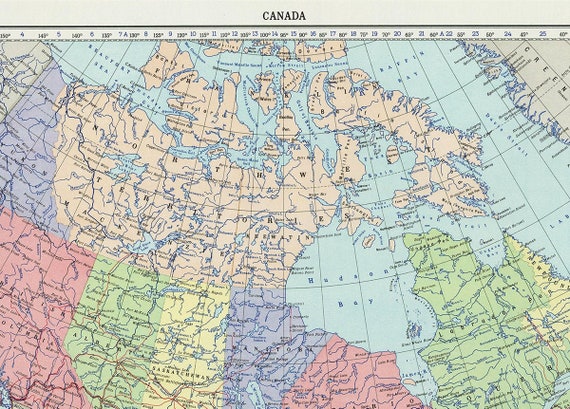

Trains Across the Continent: North American Railroad History. The current Canadian passport features the last spike ( French: le dernier crampon) on pages 10 and 11, along with the Ross photograph of Donald Alexander Smith. Ī board game published under the name The Last Spike had as its object the financing and construction of a trans-Canadian railway. Īnother recollection of this event is the narrative poem entitled Towards the Last Spike by E.
#Printable canada map series
The most notable accounts of the construction and completion of the CPR are Pierre Berton's twin volumes The National Dream and The Last Spike, which together are depicted in the Canadian television docudrama miniseries The National Dream, an eight-part series that premiered in 1974, whose rated audience of three million within Canada set a record for CBC in terms of dramatic programming. The now-famous photograph of Donald Alexander Smith driving in the CPR's last spike was taken by Winnipeg photographer Alexander J. This spike was given to the son of the patent office president at the time, and is still in the family's possession, fashioned into the shape of a carving knife.
/2000_with_permission_of_Natural_Resources_Canada-56a3887d3df78cf7727de0b0.jpg)
A regular spike was inserted in its place. The second last spike, which Smith successfully drove into the tie, was removed from the track shortly after the ceremony to prevent theft by souvenir hunters. Smith later used another iron spike, usually called "the ordinary" or "fourth spike" to provide iron to make symbolic jewelry for the wives of other officials, but he made the strips larger to distinguish these souvenirs from the original brooches. It is on long-term loan to the Canadian Museum of Immigration at Pier 21 in Halifax, Nova Scotia, where it is displayed as a tribute to the immigrant railway workers who were critical to the railway's construction. This spike was later donated to the Canada Science and Technology Museum in Ottawa. Smith had the bent spike straightened and cut several strips of iron from it, which were mounted with diamonds and presented to the wives of some of the party assembled at Craigellachie.

Roadmaster Frank Brothers extracted the spike, and it was given to Smith as the "last spike". The symbolic iron spike driven by Donald Smith was badly bent as he pounded it into the railway tie. The silver spike remained with the Van Horne family until 2012 when they donated it, along with other artifacts, to the Canadian Museum of Civilization in Gatineau, Quebec. A silver spike had been created for the Governor General, Henry Petty-Fitzmaurice, 5th Marquess of Lansdowne, who was to be present at the ceremony, but he was forced by poor weather to return with the spike to Ottawa, Ontario. In contrast to the ceremonial gold or silver final spikes often used to mark the completion of other major railways, the CPR's "last spike" was a conventional iron spike identical to the many others used in the construction of the line. The circumstance of the CPR's last spike ceremony led several spikes to assume the honour of being the "last spike". Ī plaque commemorating the driving of the last spike "Last spike" artifacts The work was then assigned to a newly incorporated CPR company, which was allowed an additional ten years to complete the line, and they did it in five. However, successive governments mismanaged the project and by the original deadline of 1881 little of the railway had been completed, resulting in threats of secession by some BC politicians. The promise of a transcontinental railway had been a major factor in British Columbia's decision to join the Canadian Confederation. At the time, the railway's completion fulfilled an 1871 commitment made by the Canadian federal government to British Columbia that a railway be built joining the Pacific province to Central Canada. The driving-in of the last spike under engineer James Ross signalled the completion of the CPR, and it remains a symbol of national unity in Canada, though due to the need to build protective snowsheds in Rogers Pass and Kicking Horse Pass in addition to the actual rails and roadbed, through trains did not run until June 1886.


 0 kommentar(er)
0 kommentar(er)
